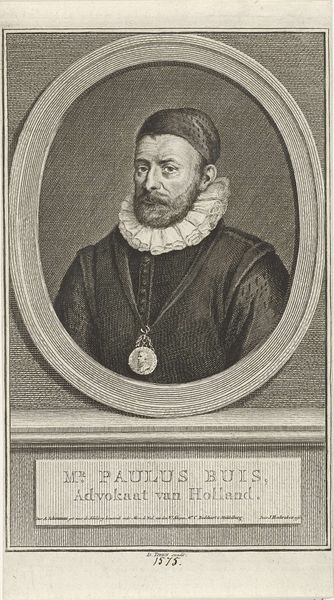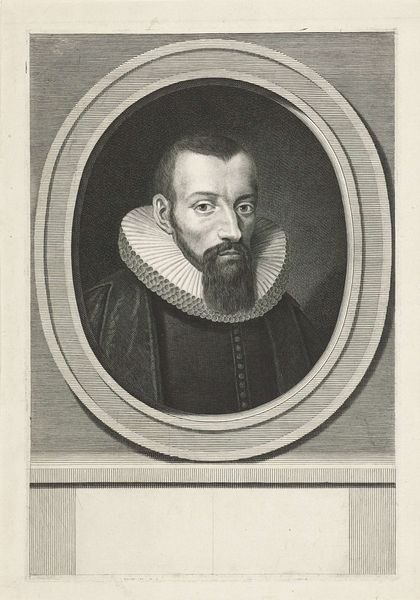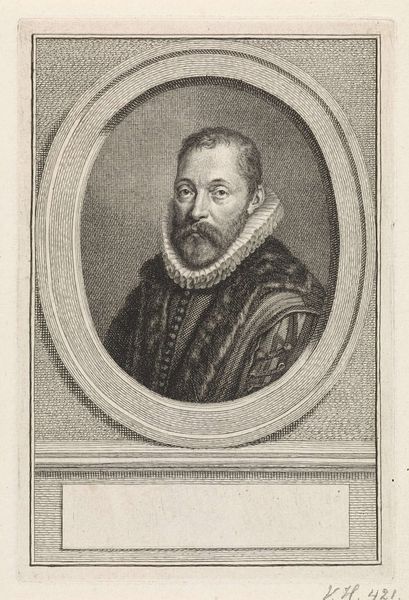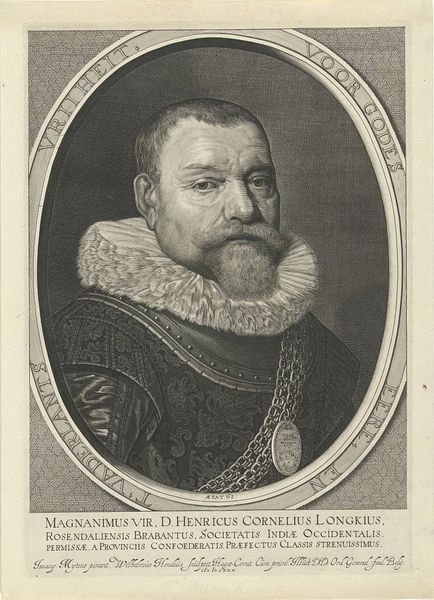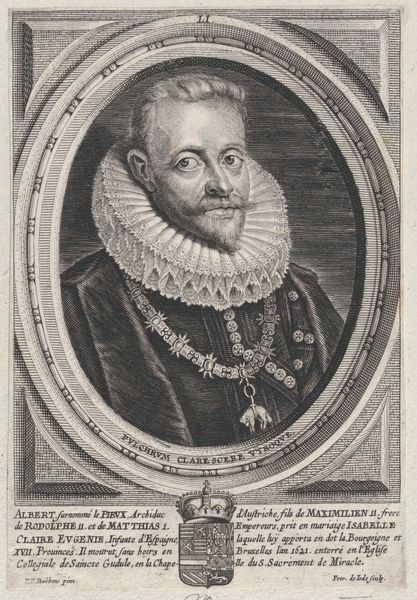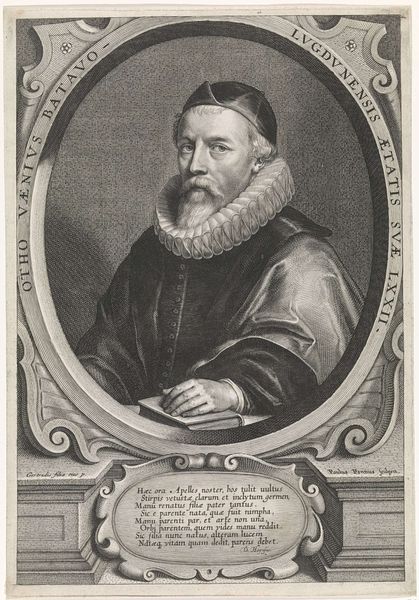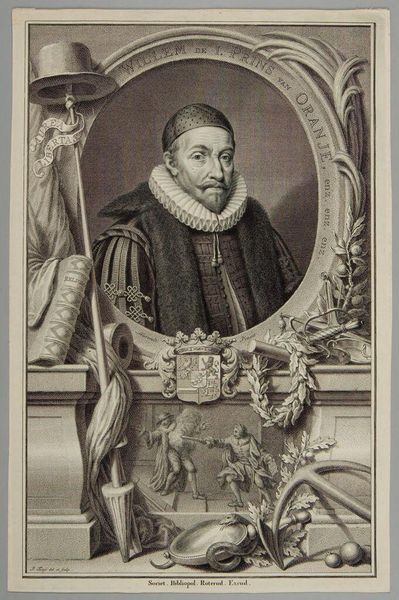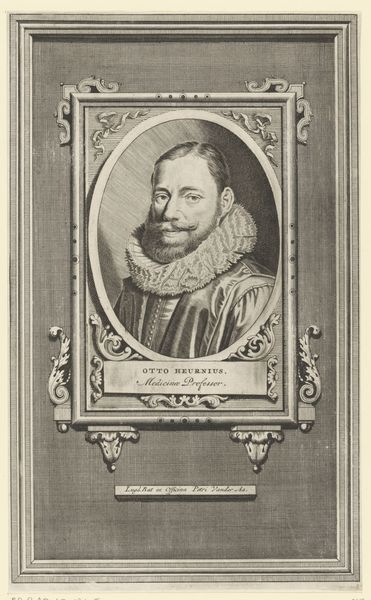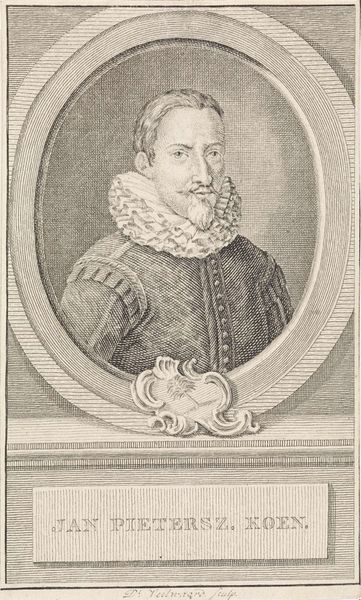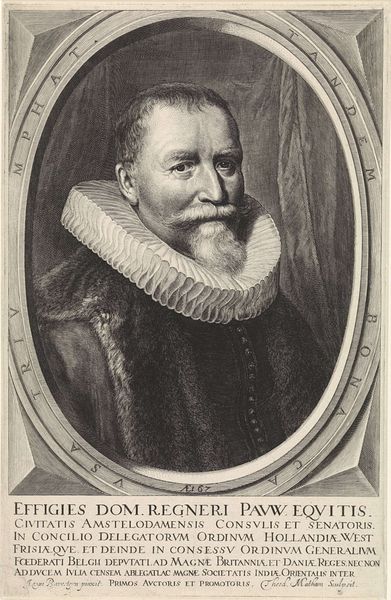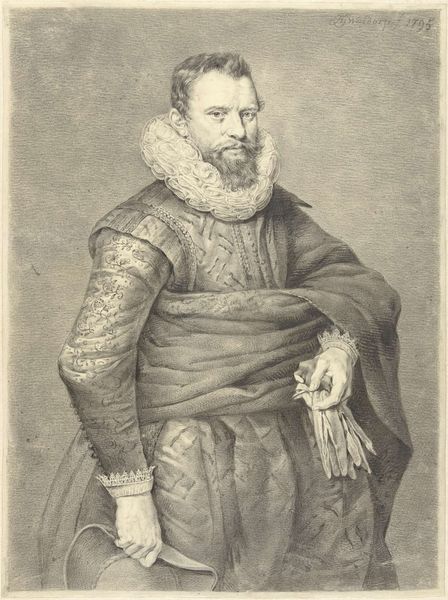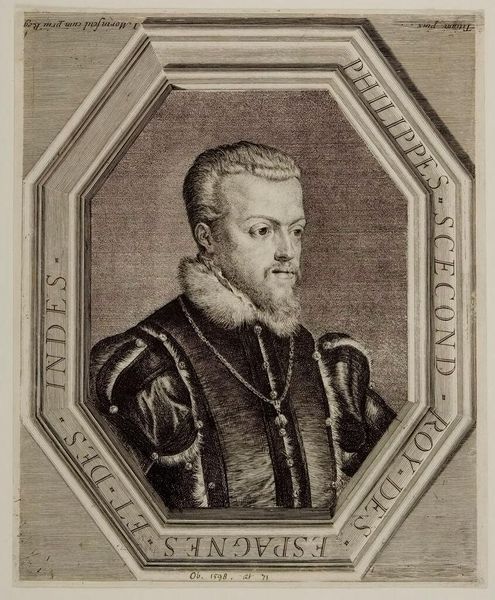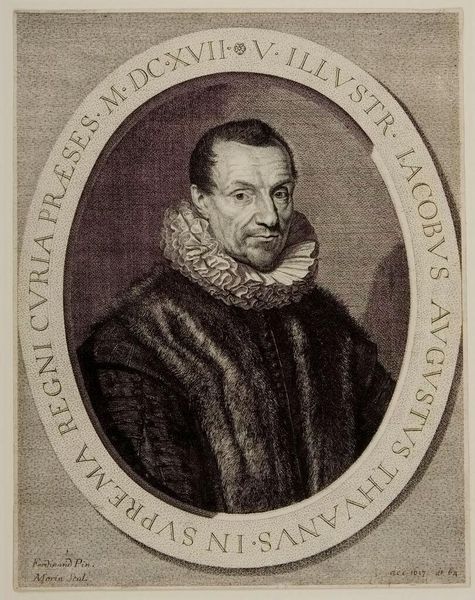
Portrait of Claes Maertensz Thoveling, Director of the Rotterdam Chamber of the Dutch East India Company, elected 1619 1695 - 1722
0:00
0:00
painting, oil-paint
#
portrait
#
baroque
#
dutch-golden-age
#
painting
#
oil-paint
#
black and white
#
history-painting
#
academic-art
Dimensions: height 82 cm, width 68 cm
Copyright: Rijks Museum: Open Domain
Pieter van der Werff painted this portrait of Claes Maertensz Thoveling, a director of the Dutch East India Company, capturing the spirit of his time. Thoveling wears a large, circular ruff, a symbol of status and wealth during the 17th century. This ruff, a seemingly simple piece of clothing, is more than mere fashion. Its evolution can be traced back to earlier, more functional forms of neckwear, gradually transforming into a statement of identity and power. The ruff, constricting yet commanding, mirrors the complex social structures of the time. We see echoes of this motif in other eras, such as the elaborate collars of Renaissance nobility. These collars and ruffs, like the masks of ancient theatre, amplify presence and denote social roles. The reappearance of this motif through time speaks to our collective memory and subconscious fascination with status and identity. It's a powerful force, engaging viewers on a deep, subconscious level, embodying both constraint and authority. The ruff's cyclical progression continues today in modern fashion, as collars reappear, evolve, and take on new meanings, reflecting our ever-changing societal values.
Comments
No comments
Be the first to comment and join the conversation on the ultimate creative platform.
